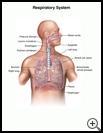
Pulmonary Nodule
________________________________________________________________________
KEY POINTS
- A pulmonary nodule is a small spot on your lung that is seen on a chest X-ray.
- Treatment depends on what tests show as the cause of the nodule. Your healthcare provider may do X-rays to watch the nodule over time to see if it changes in shape or size. You may have surgery if the nodule may be cancer or is causing problems.
- Follow the full course of treatment prescribed by your healthcare provider. Make sure you know when you should come back for a checkup.
________________________________________________________________________
What is a pulmonary nodule?
A pulmonary nodule is a small spot on your lung that is seen on an X-ray. It may be a scar from an earlier infection. A pulmonary nodule may be cancer, though most pulmonary nodules are benign (not cancer). Pulmonary nodules are usually very small in size.
What is the cause?
The exact cause of a pulmonary nodule is not always known. A pulmonary nodule may be from:
- Scars from a lung infection that you no longer have
- Infected or inflamed (red and swollen) areas that have formed a lump or mass
- Fibrosis (dense scarring) from an autoimmune disease such as rheumatoid arthritis
- Lung cancer
What are the symptoms?
You may not have any symptoms. If you do have symptoms, they may include:
- Coughing
- Wheezing
- Shortness of breath
- Coughing up blood
How is it diagnosed?
Your healthcare provider will ask about your symptoms and medical history and examine you. A pulmonary nodule usually is found when you have a chest X-ray or a CT scan of the chest for a different reason. You may have more than one pulmonary nodule.
- You may have blood tests to check for an infection.
- Your healthcare provider may need more information to decide if the pulmonary nodule is cancer or is benign. Other tests may include:
- A CT scan of the chest if the pulmonary nodule was seen on an X-ray of the chest
- An ultrasound, which uses sound waves to show pictures of the lungs
- A biopsy to remove a small sample of tissue for testing
- A chest endoscopy (mediastinoscopy), which uses a slim, lighted tube to look inside your upper chest
- A bronchoscopy, which uses a flexible, lighted tube passed through your mouth and down into your lungs to see abnormal areas
- A PET scan, which is a series of detailed pictures that is taken after your healthcare provider injects a small amount of radioactive chemical into your blood
How is it treated?
- If the pulmonary nodule is a scar from an earlier infection that you no longer have, you may not need treatment.
- You may have chest X-rays or CT scans in the future so your healthcare provider can watch for changes in the shape and size of the pulmonary nodule.
- You may need medicine if bacteria, fungus, or a parasite is causing an active infection.
- You may need treatment for a medical condition that is causing inflammation.
- You may need surgery if your pulmonary nodule is not cancer but is large or is causing other problems.
- Your healthcare provider will treat you based on your diagnosis and overall health if the pulmonary nodule is cancer.
- Your healthcare provider may advise you to quit smoking and make changes in your environment so you are not around things that irritate your lungs.
How can I take care of myself?
Follow the full course of treatment prescribed by your healthcare provider. In addition:
- Take care of your health. Try to get at least 7 to 9 hours of sleep each night. Eat a healthy diet and try to keep a healthy weight. If you want to drink alcohol, ask your healthcare provider how much is safe for you to drink. Learn ways to manage stress.
- If you smoke, try to quit. Talk to your healthcare provider about ways to quit smoking.
- Get a flu shot as soon as it is available in the fall to protect against flu.
- Ask your healthcare provider if you should get the pneumococcal shot. This shot helps prevent serious complications of pneumonia, such as an infection of the blood or brain.
- Contact your healthcare provider if you have new or worsening symptoms.
- Ask your provider:
- How and when you will get your test results
- How long it will take to recover
- If there are activities you should avoid and when you can return to your normal activities
- How to take care of yourself at home
- What symptoms or problems you should watch for and what to do if you have them
- Make sure you know when you should come back for a checkup.

